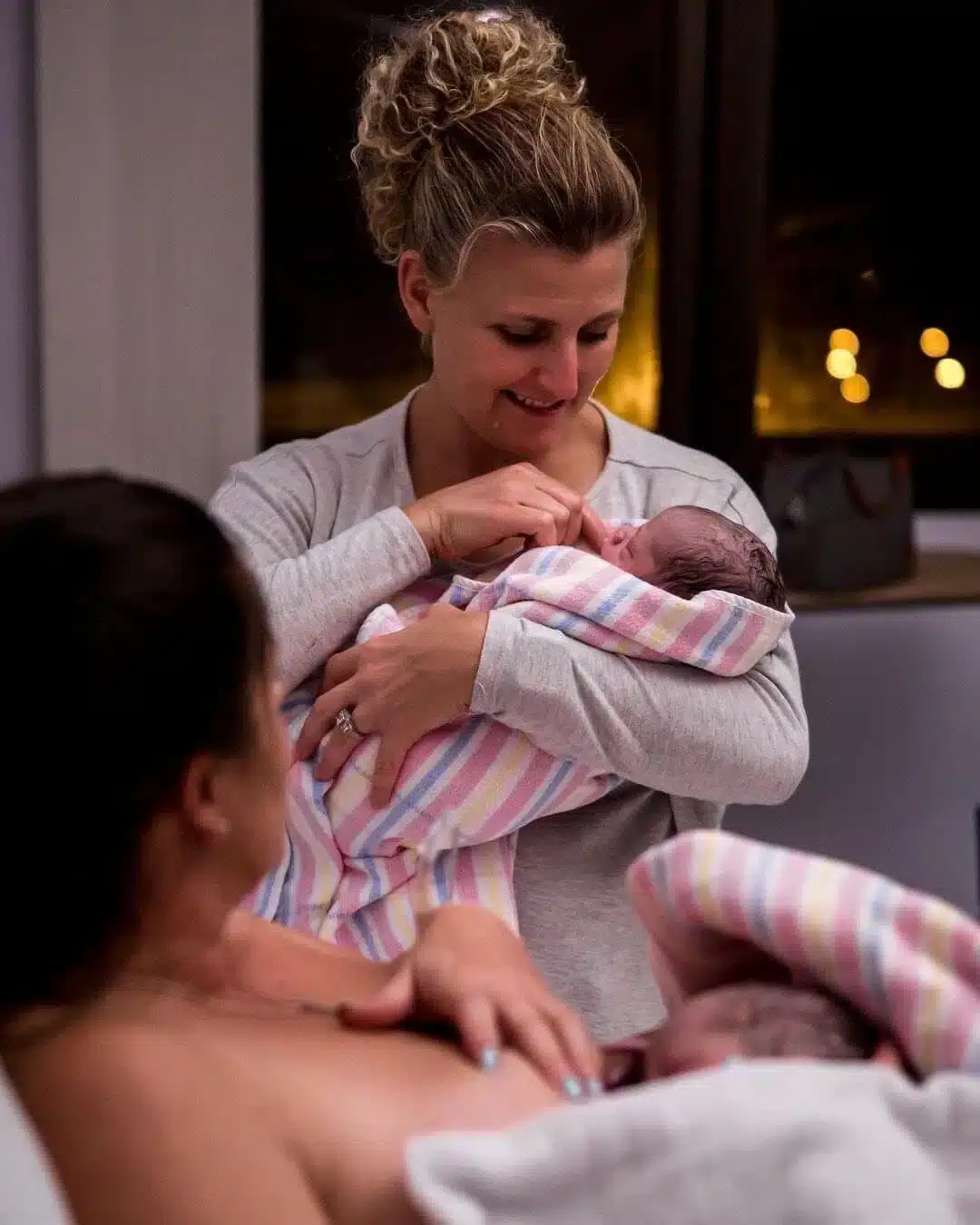Pregnancy Perineum Massage
Perineum Massage

Perineal massage is a technique that can be used during pregnancy to help to stretch the perineum, to reduce the risk of tears when giving birth.
What is the perineum?
The perineum isn’t an area of the body that gets talked about all that often but if you’re pregnant, it’s time to start paying it some attention. It’s the area of skin between the opening of the vagina and the anus that connects with the pelvic floor muscles. During a vaginal birth it stretches to make space for your baby.
If you’re feeling overwhelmed by the thought of an episiotomy (a surgical cut of the perineum to make room for the baby’s head) or vaginal tearing, you’re not alone. It’s a very common fear for most women. That is also why many women like to practice perineal massage during their pregnancy.
What is perineal massage?
Perineal massage is a technique that can be used during pregnancy to help to stretch the perineum, to reduce the risk of tears when giving birth.
Protecting your perineum doesn’t start in the second stage of labour when your baby is crowning. It starts in your pregnancy with conscious preparation – cultivating trust in your ability to birth and developing awareness of your pelvic floor.
How will perineal massage help during birth
You can physically prepare your perineum by embracing perineal massage techniques. According to the Royal Australian College of General Practitioners (RACGP), you can start massaging the perineum from when you are 34 to 35 weeks’ pregnant. It’s advised you do it twice a week, with each session lasting for a maximum of five minutes. Around 1 in 15 women who regularly do perineal massage don’t need an episiotomy (a surgical cut of the perineum to make room for the baby’s head) or experience a tear that requires stitches.
Perinium massage is beneficial for a number of reasons, including:
- It prepares the perineal tissues. Massage increases blood flow and may help the tissues and skin stretch with more ease (but with less pain) during childbirth.
- It lowers the risk of tearing.
- It reduces the need for stitches. Even if massage doesn’t prevent tearing, it has been shown to reduce the severity of the tear and, therefore, reduce the need for stitches.
- It prepares you for birth. By paying attention to your perineum and growing accustomed to the stretching sensation, you recognise the connection between your mental thoughts and your physical experience.
When and how often should I do perineal massage?
Before you start perineal massage, we recommend you chat with your care provider as they will be able to offer you tailored guidance.
Can perineal massage induce labour?
It’s unlikely to induce labour but if you notice contractions during or after performing perineal massage it’s best to stop and contact your midwife or doctor.
Perineal massage should NOT be performed:
- prior to 34 weeks
- if you have cervical shortening
- if you have placenta previa or any other condition that causes vaginal bleeding after 20 weeks
- if you have severe blood pressure problems
- if you have vaginal herpes, thrush or a vaginal infection.
How do you perform perineal massage?
Before you start, you’ll need:
- very clean hands with trimmed nails
- pillows to prop up your hips
- lubrication (opt for a natural, unscented oil)
- a mirror to help guide you (if you’re massaging yourself.
- a warm compress.
You can download my free illustrated guide here
Should I do any other exercises to prepare me for birth?
If you’d like to learn more about how you can prepare your self for birth, we’ve gathered nine perinatal health specialists to take you through everything you need to know about labour and birth. Inside The Birth Class you’ll learn from 5 midwives and an obstetrician, a women’s health physiotherapist, yoga teacher and birth doula.
Listen in your own time and as many times as you like so you understand:
– the process of labour and the hormones involved
– the benefits and risks of interventions
– your pain-relief options
– what happens in an emergency caesarean
– what to expect in the hours after birth
– active preparation for a VBAC
Plus, you’ll be taught practical birth skills that will help you navigate the twists and turns of labour.
The Birth Class is accessible birth education that’s both conversational and wise. Best of all, it will start a conversation with you and your support person so you can both feel prepared and confident to make informed choices; the foundation of a positive birth experience.
Categories
Related Products
-
The Birth Class
108 reviews$249.00The empowering online childbirth education program that will help you confidently prepare for birth.
Get your copy of our Perineal Massage Guide in your inbox
Keep Reading
We think you might enjoy these articles

Pre-existing Diabetes and Pregnancy: What You Need to Know

Harnessing the Power of Acupressure: A Natural Approach to Preparing for Birth

Thoughtful Christmas Gifts for your Pregnant Friend.

What is Pre-eclampsia?

Non-invasive Prenatal Testing (NIPT)
@AustralianBirthStories
Follow along with us
@AustralianBirthStories
Follow along with us
@AustralianBirthStories
Follow along with us
@AustralianBirthStories
Follow along with us
@AustralianBirthStories
Follow along with us
@AustralianBirthStories
Follow along with us
@AustralianBirthStories
Follow along with us
@AustralianBirthStories
Follow along with us
@AustralianBirthStories
Follow along with us
@AustralianBirthStories
Follow along with us
@AustralianBirthStories
Follow along with us
@AustralianBirthStories
Follow along with us



